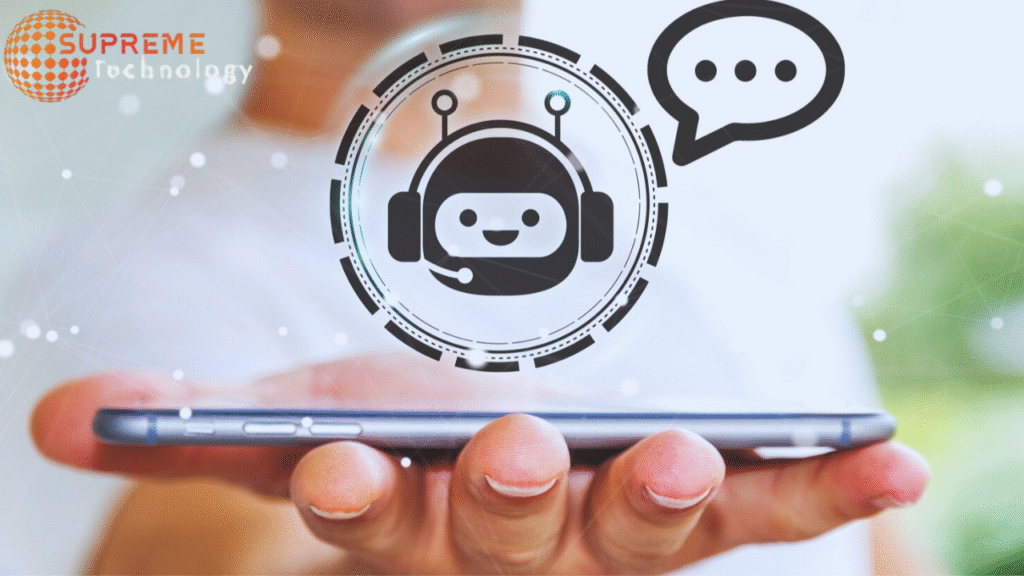Chatbots have become integral to digital interactions in 2025, transforming customer service, e-commerce, and internal operations with advanced AI capabilities. Powered by large language models (LLMs), natural language processing (NLP), and agentic AI, chatbots now handle complex tasks, from resolving customer queries to automating business workflows. With the global chatbot market projected to reach $15.5 billion by 2028, platforms like Intercom, Drift, and open-source solutions are driving innovation. This article explores the key features, recent advancements, and best practices for leveraging chatbots in 2025’s digital ecosystem.

What Makes Chatbots Stand Out?
Chatbots are AI-driven tools that simulate human-like conversations, automating tasks and enhancing user experiences across industries. Their core strengths include:
- 24/7 Availability: Provide instant responses, improving customer satisfaction.
- Scalability: Handle thousands of interactions simultaneously, reducing operational costs.
- Personalization: Use data-driven insights to tailor responses and recommendations.
- Multichannel Integration: Operate across websites, apps, and platforms like WhatsApp and Slack.
- Agentic Capabilities: Execute complex tasks autonomously, such as booking or troubleshooting.
Key Features and Developments for Chatbots in 2025

Drawing from recent industry trends and advancements in AI, here are the top features and developments in chatbots for 2025:
1. Agentic AI and Autonomous Workflows
- Description: In 2025, chatbots leverage agentic AI to perform multi-step tasks, such as scheduling appointments, processing refunds, or generating reports. Platforms like Intercom’s Fin AI and Salesforce’s Agentforce use LLMs to break down complex queries and execute actions via API integrations, reducing human intervention by up to 60%.
- Key Benefits: Enhances efficiency; handles nuanced customer requests.
- Best For: Businesses with high-volume customer interactions or internal automation needs.
- Implementation: Deploy via platforms like Intercom; integrate with CRMs like HubSpot for seamless workflows.
2. Hyper-Personalized Customer Experiences
- Description: Chatbots now use predictive analytics and customer data to deliver tailored responses. In Q1 2025, Drift introduced AI-driven personalization that analyzes user behavior to recommend products or resolve issues proactively, achieving a 30% increase in customer engagement.
- Key Benefits: Boosts conversion rates; improves user satisfaction with context-aware responses.
- Best For: E-commerce, SaaS, and customer support teams.
- Implementation: Configure bots with user data from analytics tools; test personalization settings for accuracy.
3. Multilingual and Voice-Enabled Chatbots
- Description: With advancements in NLP, chatbots like Google’s Dialogflow and Microsoft’s Bot Framework support real-time translation across 100+ languages and voice interactions. Launched in 2025, voice-enabled bots integrate with smart assistants like Gemini, handling queries via platforms like WhatsApp and Telegram.
- Key Benefits: Expands global reach; enhances accessibility for diverse audiences.
- Best For: International businesses and customer support in multilingual regions.
- Implementation: Enable multilingual settings; test voice recognition for accuracy in noisy environments.
4. Open-Source and No-Code Platforms
- Description: Open-source frameworks like Rasa and Botpress, alongside no-code platforms like Landbot, empower businesses to build custom chatbots without coding expertise. In 2025, Rasa’s updated SDK supports agentic AI, enabling small businesses to create bots for niche tasks like lead qualification or FAQ automation.
- Key Benefits: Cost-effective; customizable for specific industries or workflows.
- Best For: Startups and SMEs with limited technical resources.
- Implementation: Use no-code builders like Landbot; leverage Rasa for advanced customization.
5. Enhanced Security and Compliance
- Description: Chatbots in 2025 prioritize data privacy with end-to-end encryption and compliance with GDPR, CCPA, and HIPAA. Platforms like Zendesk introduced AI-driven compliance monitoring in Q2 2025, flagging sensitive data in real time to prevent breaches.
- Key Benefits: Builds trust; ensures regulatory compliance in sensitive industries.
- Best For: Healthcare, finance, and enterprises handling sensitive data.
- Implementation: Choose platforms with built-in compliance tools; audit chatbot data handling regularly.
Warnings and Considerations
- Over-Reliance on Automation: Chatbots may struggle with highly emotional or complex queries, risking customer frustration. Maintain human escalation options.
- Setup Costs: Enterprise-grade platforms like Salesforce Agentforce can cost $50-$200/user/month. Evaluate ROI for smaller teams.
- Data Privacy Risks: Improper data handling can violate regulations. Ensure compliance with regional laws like GDPR.
- Training Requirements: Bots require regular updates to handle new queries. Allocate time for training and testing.
- Connectivity Dependence: Cloud-based bots need stable internet. Use offline-capable solutions like Rasa in unreliable network areas.
How to Leverage Chatbots Effectively in 2025

Maximize chatbot effectiveness with these strategies:
- Customer Support: Deploy bots like Intercom’s Fin AI for 24/7 query resolution; integrate with CRMs for context-aware responses.
- E-Commerce: Use Drift or Landbot for personalized product recommendations; enable one-tap checkout via WhatsApp.
- Small Businesses: Leverage no-code platforms like Botpress for cost-effective automation; start with FAQ bots.
- Global Teams: Enable multilingual bots via Dialogflow; test translations for accuracy in target markets.
- Developers: Use open-source frameworks like Rasa for custom workflows; integrate with APIs for advanced functionality.
Conclusion
In 2025, chatbots are indispensable tools for businesses and digital nomads, driving efficiency and engagement through agentic AI, hyper-personalization, and multilingual capabilities. Platforms like Intercom, Drift, and Rasa offer scalable solutions for customer service, e-commerce, and internal automation, while no-code and open-source options empower smaller teams. Despite challenges like setup costs and data privacy, chatbots’ ability to handle complex tasks and deliver seamless experiences makes them a game-changer. By selecting the right platform, ensuring compliance, and balancing automation with human touch, users can harness chatbots to thrive in 2025’s fast-paced digital landscape.
